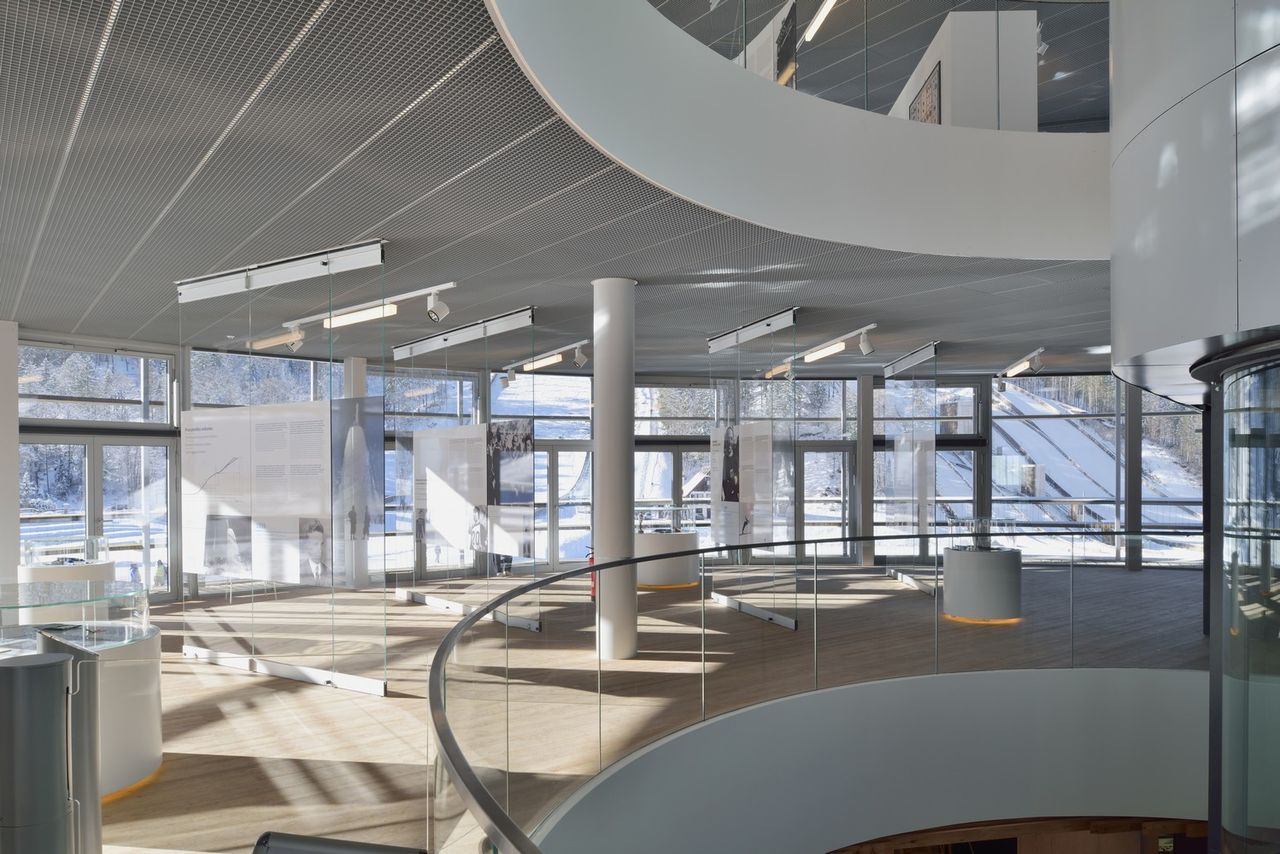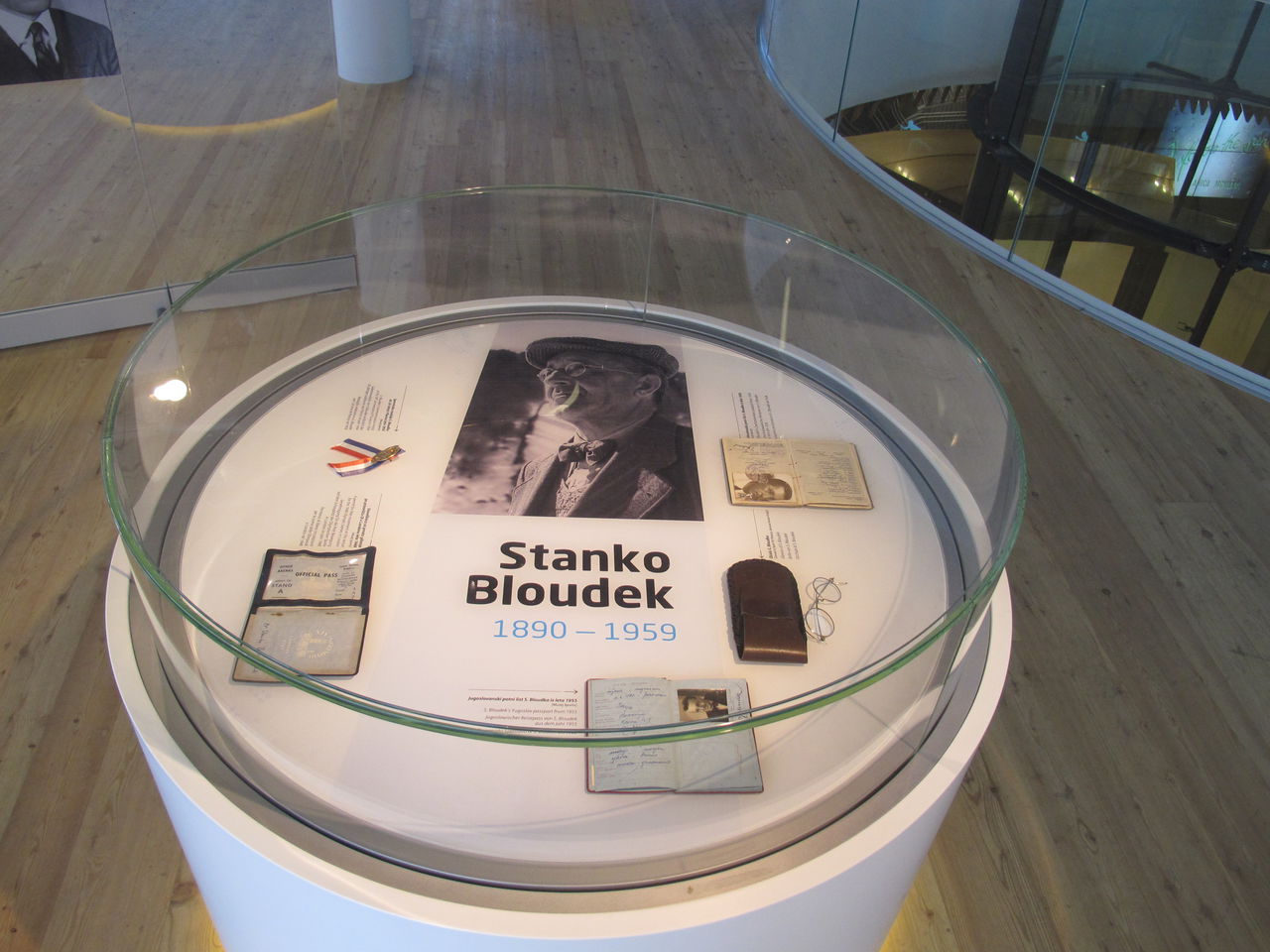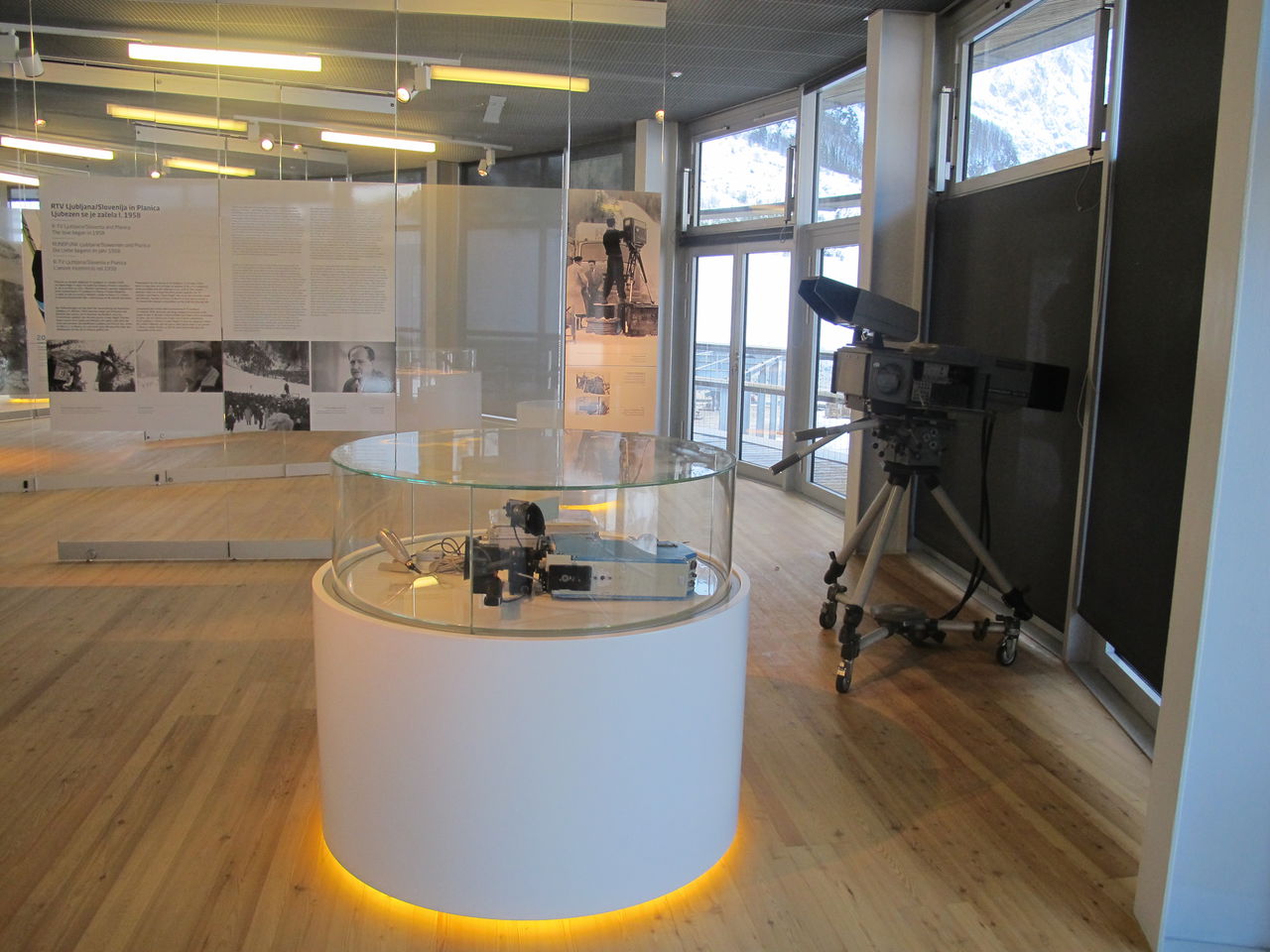 |
|
 |
|
| About · Contact · Help · Desk · ⚙ · 3,562 articles | Contents · A–Ž index |
(updated re management) |
|||
| (8 intermediate revisions by the same user not shown) | |||
| Line 13: | Line 13: | ||
| website = http://www.nc-planica.si/ | | website = http://www.nc-planica.si/ | ||
| managed by 1 = Institute of Sports of the Republic of Slovenia Planica | | managed by 1 = Institute of Sports of the Republic of Slovenia Planica | ||
| − | | contacts = {{Contact | + | | contacts = |
| − | | name = | + | {{Contact |
| + | | name = Jelko Gros | ||
| role = Head of Nordic Centre Planica | | role = Head of Nordic Centre Planica | ||
| − | | telephone = | + | | telephone = |
| − | | email = | + | | email = jelko.gros@nc-planica.si |
| − | }}{{Contact | + | }} |
| + | {{Contact | ||
| + | | name = Franci Petek | ||
| + | | role = Director of the Institute of Sports of the Republic of Slovenia Planica | ||
| + | | street = Dunajska cesta 22 | ||
| + | | town = 1000 Ljubljana | ||
| + | | website = http://www.zsrs-planica.si | ||
| + | | email = franci.petek@sport.si | ||
| + | }} | ||
| + | {{Contact | ||
| name = | | name = | ||
| role = | | role = | ||
| − | | telephone = | + | | telephone = |
| email = | | email = | ||
}} | }} | ||
| Line 28: | Line 38: | ||
{{Teaser| | {{Teaser| | ||
| − | |||
{{wide image|Nordic Centre Planica 2016 pavilion and ski flying hills.jpg}} | {{wide image|Nordic Centre Planica 2016 pavilion and ski flying hills.jpg}} | ||
| Line 34: | Line 43: | ||
The [[Planica Museum]] is dedicated to the history of ski jumping and flying in Planica, an alpine valley in northwestern Slovenia. Historically, this valley has been one of the prime sites for the development of ski flying as a sports discipline of its own, and consequently, the museum also presents the wider history of ski jumping as such. Nevertheless, its main focus is to present and develop both the cultural as well as the technical heritage of almost a century of ski jumping in Planica. | The [[Planica Museum]] is dedicated to the history of ski jumping and flying in Planica, an alpine valley in northwestern Slovenia. Historically, this valley has been one of the prime sites for the development of ski flying as a sports discipline of its own, and consequently, the museum also presents the wider history of ski jumping as such. Nevertheless, its main focus is to present and develop both the cultural as well as the technical heritage of almost a century of ski jumping in Planica. | ||
| − | Set in a newly constructed pavilion as a part of the Nordic skiing complex called the [[:Category:Nordic Centre Planica|Nordic Centre Planica]], the | + | At the end of 2015, the [[:Category:Nordic Centre Planica|Nordic Centre Planica]] was completed and inaugurated. It is a modern Nordic skiing complex that boasts eight newly built or renovated ski jumping and flying hills and caters to cross-country skiing and various summer activities. The three bureaus that handled the architectural dimensions of the project are: [[A.biro]] (ski jumps and bridges), [[STVAR Architects]] (service and performance buildings, pavilion) and [[Studio AKKA]] (landscape, including the lay-out of infrastructure and cross country lanes). |
| + | |||
| + | Set in a newly constructed pavilion as a part of the Nordic skiing complex called the [[:Category:Nordic Centre Planica|Nordic Centre Planica]], the Planica Museum opened its doors in [[established::2016]]. | ||
}} | }} | ||
| + | The exhibition was collected and set up by [[Iztok Durjava]] from the [[Slovene Sports Museum]] which is also managed by the Institute of Sports of the Republic of Slovenia Planica. | ||
{{image|STVAR architects 2016 Nordic Centre Planica pavilion interior.jpg}} | {{image|STVAR architects 2016 Nordic Centre Planica pavilion interior.jpg}} | ||
| + | |||
==Background== | ==Background== | ||
| Line 48: | Line 61: | ||
In 1969, another and even more ambitious flying hill was erected. This one followed suit as the prime site for most record lengths until 2005. Together with some exceptional sportsmen, all of this played a significant part in Planica becoming something of a cultural phenomenon in Slovenia. | In 1969, another and even more ambitious flying hill was erected. This one followed suit as the prime site for most record lengths until 2005. Together with some exceptional sportsmen, all of this played a significant part in Planica becoming something of a cultural phenomenon in Slovenia. | ||
| − | |||
| − | |||
| − | |||
==Permanent collection exhibition== | ==Permanent collection exhibition== | ||
| Line 56: | Line 66: | ||
The museum is divided into two parts, each on its own floor. An additional ground floor, freely open for everyone, comprises a few interactive video displays that present and illustrate both the local as well as global histories of ski jumping and cross-country skiing. | The museum is divided into two parts, each on its own floor. An additional ground floor, freely open for everyone, comprises a few interactive video displays that present and illustrate both the local as well as global histories of ski jumping and cross-country skiing. | ||
| − | The upper two floors deal with the development of ski jumping in Planica and its prime protagonists, the sportsmen as well as the craftsmen. Of the latter, the most important figures are [[Stanko Bloudek]], [[Ivan Rožman]], and the brothers [[Vlado Gorišek|Vlado]] and [[Janez Gorišek]]. The first two are responsible for the Bloudek Giant, and the first floor covers the era of this ski jumping hill (1934–1969). The second floor features the construction of the Gorišek | + | The upper two floors deal with the development of ski jumping in Planica and its prime protagonists, the sportsmen as well as the craftsmen. Of the latter, the most important figures are [[Stanko Bloudek]], [[Ivan Rožman]], and the brothers [[Vlado Gorišek|Vlado]] and [[Janez Gorišek]]. The first two are responsible for the Bloudek Giant, and the first floor covers the era of this ski jumping hill (1934–1969). The second floor features the construction of the Gorišek Brothers Hill, which marks the second era. |
{{image|Planica Museum 2016 RTV related exhibit.JPG}} | {{image|Planica Museum 2016 RTV related exhibit.JPG}} | ||
| Line 66: | Line 76: | ||
== See also == | == See also == | ||
* [[Slovene Sports Museum]] | * [[Slovene Sports Museum]] | ||
| − | |||
* [[STVAR architects]] | * [[STVAR architects]] | ||
* [[Studio AKKA]] | * [[Studio AKKA]] | ||
| Line 73: | Line 82: | ||
== External link == | == External link == | ||
| − | * [ | + | * [https://www.nc-planica.si/en/ Nordic Centre Planica website] |
* [http://www.zsrs-planica.si/ Planica Institute of Sports website] (in Slovenian) | * [http://www.zsrs-planica.si/ Planica Institute of Sports website] (in Slovenian) | ||
| − | * [ | + | * [https://www.planica.si/en/news-archive/news/2018-05-15-planica-2023-candidacy-presentation Planica 2023 candidacy presentation on Planica.si website] |
* [https://en.wikipedia.org/wiki/Planica_Nordic_Center Nordic Centre Planica on Wikipedia] | * [https://en.wikipedia.org/wiki/Planica_Nordic_Center Nordic Centre Planica on Wikipedia] | ||
* [https://en.wikipedia.org/wiki/Stanko_Bloudek Stanko Bloudek on Wikipedia] | * [https://en.wikipedia.org/wiki/Stanko_Bloudek Stanko Bloudek on Wikipedia] | ||
| Line 85: | Line 94: | ||
[[Category:Specialised museums]] | [[Category:Specialised museums]] | ||
[[Category:Sport]] | [[Category:Sport]] | ||
| + | [[Category:Sport heritage]] | ||
[[Category:Tourism]] | [[Category:Tourism]] | ||
[[Category:Nordic Centre Planica]] | [[Category:Nordic Centre Planica]] | ||
This logo is missing!
If you have it, please email it to us.
The exhibition was collected and set up by Iztok Durjava from the Slovene Sports Museum which is also managed by the Institute of Sports of the Republic of Slovenia Planica.
 Nordic Centre Planica pavilion interior that houses Planica Museum designed by the STVAR architects, 2016
Nordic Centre Planica pavilion interior that houses Planica Museum designed by the STVAR architects, 2016
The history of ski jumping in the Planica Valley starts in the late 1920s, when first considerations to develop the valley into an international sports tourism centre surfaced. Next followed the construction of the first ski jumping hill in 1930. A much bigger one, called the Bloudek Giant (Bloudkova velikanka), was finished in 1934, when it also claimed its first world record. Soon after, the first ever jump over 100 metres took place there, and along with it also a new discipline called ski flying. Until 1950, all but one ski flying world record had been achieved in Planica.

In 1969, another and even more ambitious flying hill was erected. This one followed suit as the prime site for most record lengths until 2005. Together with some exceptional sportsmen, all of this played a significant part in Planica becoming something of a cultural phenomenon in Slovenia.
The museum is divided into two parts, each on its own floor. An additional ground floor, freely open for everyone, comprises a few interactive video displays that present and illustrate both the local as well as global histories of ski jumping and cross-country skiing.
The upper two floors deal with the development of ski jumping in Planica and its prime protagonists, the sportsmen as well as the craftsmen. Of the latter, the most important figures are Stanko Bloudek, Ivan Rožman, and the brothers Vlado and Janez Gorišek. The first two are responsible for the Bloudek Giant, and the first floor covers the era of this ski jumping hill (1934–1969). The second floor features the construction of the Gorišek Brothers Hill, which marks the second era.

The museum collection displays various pieces of ski jumping equipment, different cups and medals, accessories of the aforementioned engineers, some museum specimens of the technology used by Radio-Television Slovenia to transmit the jumps, sport suits worn by Slovenian jumpers, and so on. There is naturally also a series of explanatory texts, pictures, holograms, and videos, many of them gathered in a small reading room.
Of a more interactive nature are simulators of actual ski jumps and, if slightly less physical, of the judging of a ski jumping event. Though not directly a part of the museum, there is also a wind tube that simulates floating.
Culture.si offers information on Slovene cultural producers, venues, festivals and support services, all in one place. It encourages international cultural exchange in the fields of arts, culture and heritage. The portal and its content is owned and funded by the Ministry of Culture, funded by the European Union Recovery and Resilience Plan and developed by Ljudmila Art and Science Laboratory.